【Chinese Museums】Must-Visit Famous Museums in China
Catalogue
- 1. Chinese Museums-Beijing: The Forbidden City
- 2. Chinese Museums-Xi'an, Shaanxi: Emperor Qinshihuang's Mausoleum Site Museum (Terracotta Army)
- 3. Chinese Museums-Guanghan, Sichuan: Sanxingdui Museum
- 4. Chinese Museums-Beijing: National Museum of China
- 5. Chinese Museums-Changsha, Hunan: Hunan Museum
- 6. Chinese Museums-Xi'an, Shaanxi: Shaanxi History Museum
- 7. Chinese Museums-Chengdu, Sichuan: Jinsha Site Museum
- 8. Chinese Museums-Hong Kong: Hong Kong Palace Museum
- 9. Chinese Museums-Wuhan, Hubei: Hubei Provincial Museum
- 10. Chinese Museums-Lanzhou, Gansu: Gansu Provincial Museum
- 11. Chinese Museums-Nanjing, Jiangsu: Nanjing Museum
- 12. Chinese Museums-Taipei, Taiwan: National Palace Museum
- 13. Chinese Museums-Shanghai, China: Shanghai Museum
Show More
Those willing to spend time and effort in Chinese museums can glimpse the world's vastness in a small space and embark on a great time travel even when alone. There are royal palaces that witnessed dynastic changes like the Palace Museum, the Terracotta Army of Emperor Qinshihuang's Mausoleum, hailed as the eighth wonder of the world, and the Sanxingdui Museum showcasing the ancient Shu civilization. Instead of searching online for popular spots, why not embark on a tour of Chinese museums that transcends time and space?
The Forbidden City, also known as the Imperial Palace, served as the royal palace during the Ming and Qing dynasties and is a symbol of ancient China. As one of the most well-preserved wooden architectural complexes in Chinese museums, you can truly feel its former glory when stepping into its grand and orderly high walls and deep courtyards. Walking through the Hall of Supreme Harmony, the Palace of Heavenly Purity, and the Palace of Earthly Tranquility, and admiring the flowers in the imperial garden, you might feel like you've stepped into a historical drama. It is one of the iconic Chinese museums that holds over a million precious cultural relics.
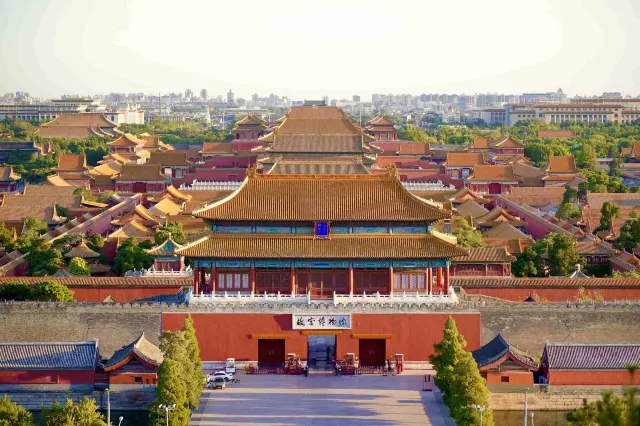
Must-see highlights: The Hall of Supreme Harmony, where the emperor held grand ceremonies; the Hall of Mental Cultivation, where the emperor attended court; the beautiful Golden Water Bridge; the Palace of Earthly Tranquility, the emperor's wedding chamber; the Hall of Preserving Harmony, where the imperial examinations were held; the Treasure Gallery with its unparalleled treasures; and the Clock Gallery with its exquisite timepieces.
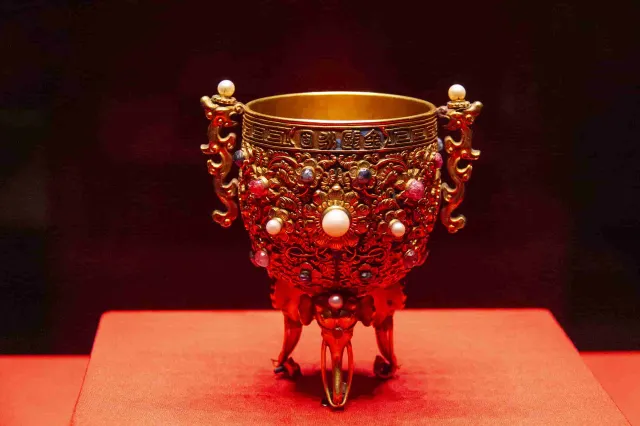

Museum Reservation: Visitors must be booked in advance, the earliest you can visit is 7 days before 20:00 in the official channel “Palace Museum” small program to book tickets. Annual pass holders must register at least one day in advance.
Opening Hours: Closed on Mondays except for public holidays. Peak season (April-October): 08:30-17:00, off-season (November-March): 08:30-16:30.
Location: No. 4, Jingshanqian Street, Dongcheng District, Beijing
The Terracotta Army is one of the must-see attractions in Chinese museums, celebrated as one of the greatest archaeological discoveries of the 20th century. The detailed and life-sized figures in the Terracotta Army Museum, alongside the Qinshihuang Mausoleum Archaeological Park, make this one of the most important Chinese museums that unveils the grandeur of ancient Chinese military power.

Must-see highlights: The main attractions include Pit 1, Pit 2, Pit 3, the Bronze Chariot and Horse Exhibition Hall, and related temporary exhibitions. Pit 1 is the most spectacular, displaying thousands of infantry, chariots, and horses in a grand formation. Pit 2 showcases the diversity and combat strategies of the Qin army, while Pit 3, though smaller, is considered the command center of the Terracotta Army and is well-preserved. The museum also exhibits the Bronze Chariot and Horse.
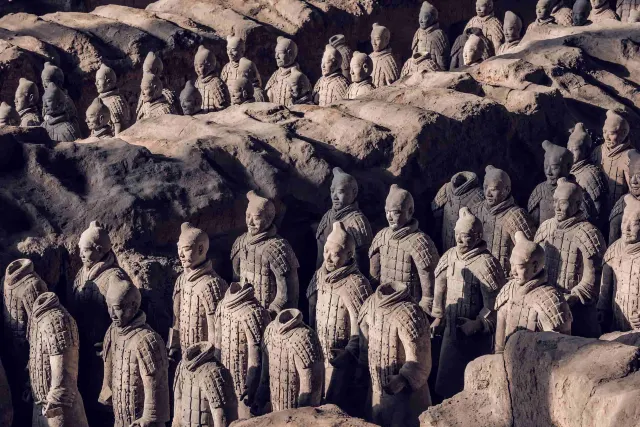
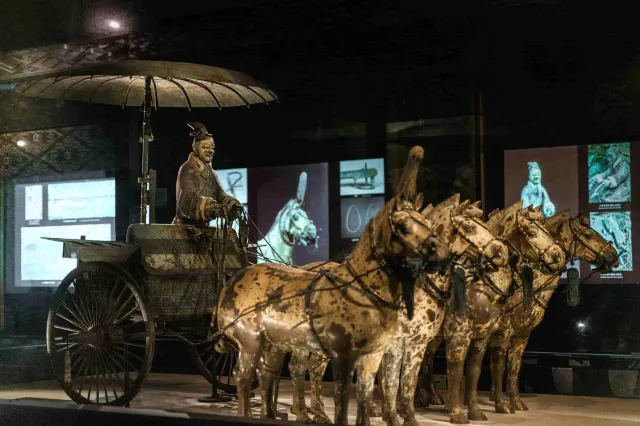
Museum Reservation: Real-name reservation is required through the official website and WeChat account of Emperor Qinshihuang's Mausoleum Site Museum. Tickets can also be purchased via Ctrip.
Opening Hours: March 16 - November 15: 08:30-18:30, November 16 - March 15: 08:30-18:00.
Location: 1.5 km east of Qin Shihuang Mausoleum in Lintong District, Xi'an City
Sanxingdui Museum, a highlight of Chinese museums, showcases one of the greatest archaeological discoveries of the 20th century and provides insights into the ancient Shu civilization. Its comprehensive and Bronze Hall exhibits offer visitors a chance to experience artifacts that represent a unique culture from China's distant past.
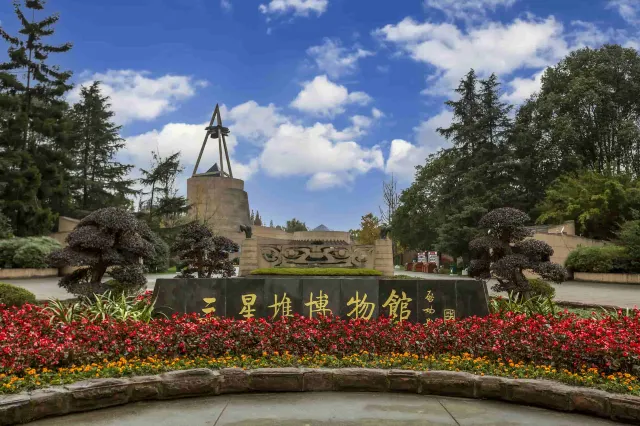
Must-see highlights: Among the ancient Shu treasures, there is a 2.62-meter-tall bronze standing figure, a 1.38-meter-wide bronze mask, and a 3.95-meter-tall bronze sacred tree, all considered masterpieces of their time. The gold artifacts, represented by the radiant gold staff, and the jade artifacts, represented by the intricately decorated jade zhang, are also rare treasures.


Museum Reservation: Tickets must be reserved through the official website and WeChat account of the Sanxingdui Museum.
Opening Hours: Closed on Chinese New Year's Eve, open year-round except for temporary closures. During peak periods (Golden Week, short holidays, and summer/winter vacations in January, February, July, and August), the museum extends its hours from 08:30-20:00, with the last entry at 18:00. Off-season hours are 08:30-18:00.
Location: Zhenwu Village, Nanxing Town, Guanghan District, Deyang City
One of the most significant Chinese museums, the National Museum of China, holds over 1.43 million artifacts, representing the full span of Chinese history. It offers an extensive look at China's ancient culture, revolutionary history, and modern achievements. It is an ideal destination for anyone interested in the vast cultural treasures found in Chinese museums.
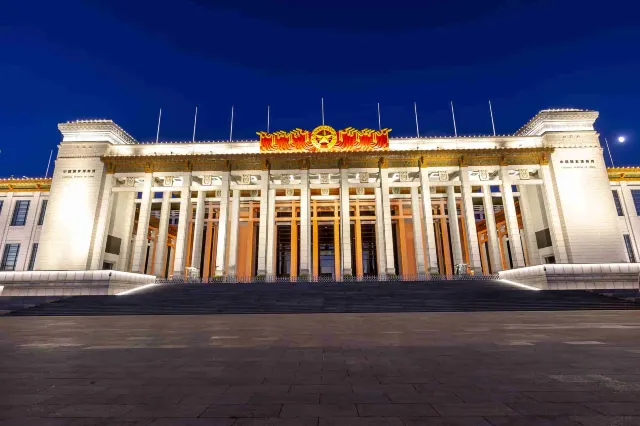
Must-see highlights: The Neolithic Yangshao Culture pottery eagle; the largest existing Shang Dynasty bronze ritual vessel, the Houmuwu Ding; the late Shang Dynasty bronze square zun, the Four-goat Square Zun; the Eastern Han Dynasty painted pottery figurine, the Drumming and Singing Figurine; the Tang Dynasty tri-colored glazed pottery camel with musicians; and the Ming Dynasty Wanli Emperor's consort's phoenix crown, the Nine-Dragon Nine-Phoenix Crown.
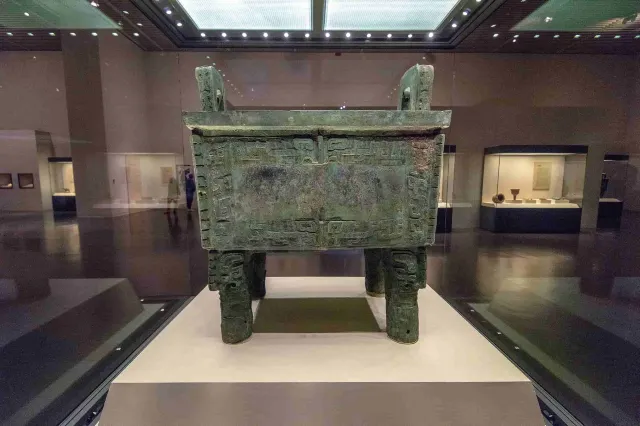
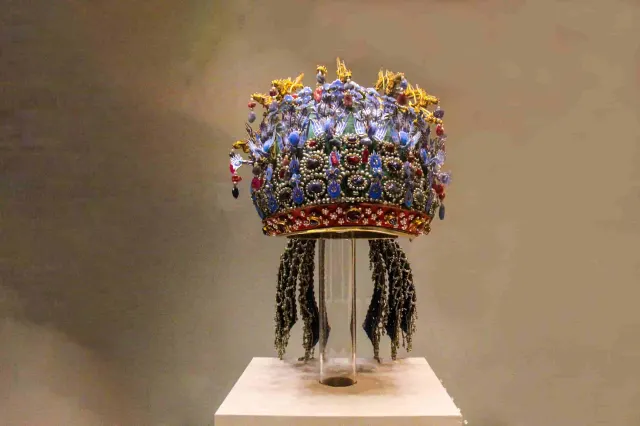
Museum Reservation: Free real-name reservation for all visitors (except for special exhibitions with fees) up to 7 days in advance through the official website, WeChat account, mini-program, and official app of the National Museum of China.
Opening Hours: Closed on Mondays except for public holidays. September-December: 09:00-17:00, July 11-August: 09:00-17:30.
Location: East side of Tiananmen Square, No. 16 Dongchang'an Street, Dongcheng District, Beijing
The Hunan Museum is renowned for its rich collection of artifacts, especially those from the Mawangdui Han Tombs. The exhibition hall displays items such as the thin cicada wings plain gauze robe, the well-preserved printed cotton robe, various exquisite embroideries, brightly painted lacquerware, finely detailed painted silk banners, richly contented silk books, intricately carved wooden figurines, musical instruments like the qin, se, and sheng, and weapons. Over 3,000 precious artifacts were unearthed from the three Han tombs at Mawangdui, most of which are well-preserved.
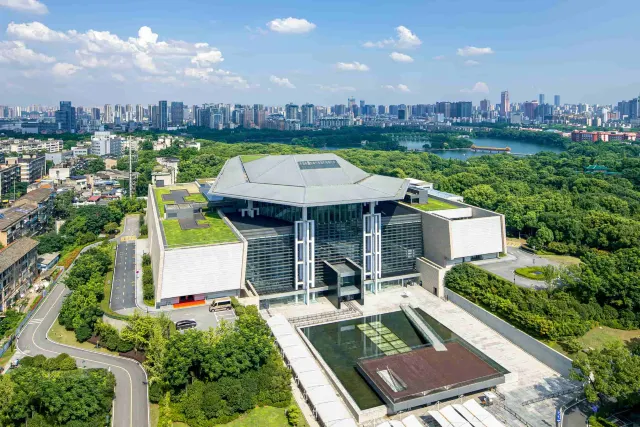
Must-see highlights: Plain Gauze Gown, Printed and painted floss silk padded gauze robe, the T-shaped painting on Silk, the Bronze Ding with Human Faces, the Black Lacquer Coffin, Figure Driving a Dragon, Ink on Silk, and the thousand-year-old corpse of Lady Xin Zhui.
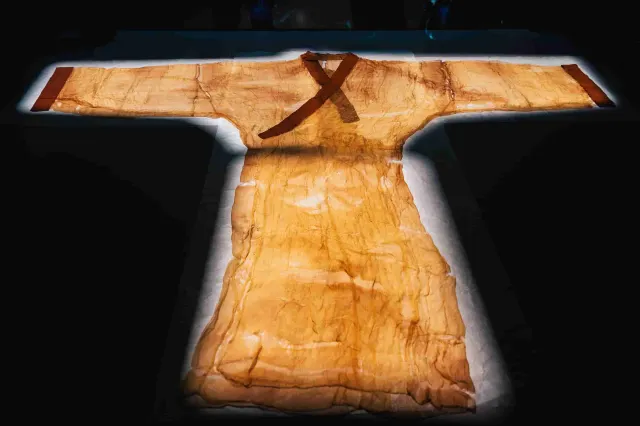

Museum Reservation: Real-name reservation up to 7 days in advance (excluding the current day) through the official website, WeChat service account, and Alipay mini-program of the Hunan Museum. Tickets for the latest day are released at 20:00 daily.
Opening Hours: Closed on Mondays (except for public holidays), open from Tuesday to Sunday 09:00-17:00 (last entry at 16:00). From July 2 to September 1, the museum extends its hours to 20:30 (last entry at 19:00).
Location: No. 50, Dongfeng Road, Kaifu District, Changsha City
The Shaanxi History Museum, with its Tang Dynasty architectural style of "central hall and four corner towers," is orderly and majestic. In 2016, it was selected as one of the "20th Century Architectural Heritage of China" by the Chinese Society of Cultural Relics and the Chinese Society of Architecture. The museum houses many treasures, including bronze artifacts from the Shang and Zhou dynasties, pottery figurines from various dynasties, gold and silverware from the Han and Tang dynasties, and Tang Dynasty tomb murals, most of which are treasures from the Han and Tang golden ages, including many national treasures that are prohibited from being exported.

Must-see highlights: The Tang Dynasty jade carving with inlaid gold, the agate cup with a gold beast head, the Tang Dynasty tri-colored glazed pottery camel with musicians, the Tang Dynasty silverware with a gold-inlaid dancing horse holding a cup, the Tang Dynasty gold bowl with mandarin duck and lotus petal patterns, and the seal of the Empress of the Western Han Dynasty.
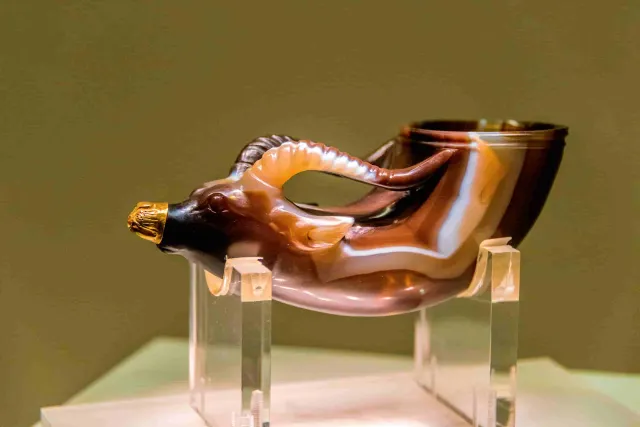
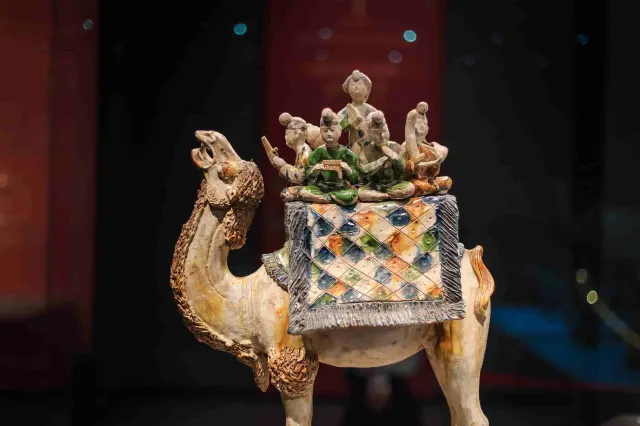
Museum Reservation: Real-name reservation is required through the official WeChat account of the Shaanxi History Museum.
Opening Hours: Closed on Mondays except for public holidays. September-November 14: 08:30-18:00, November 15-March 14: 09:00-17:30, March 15-June: 08:30-18:00, July-August: 08:30-18:30.
Location: No. 91 Xiaozhai East Road, Yanta District, Xi'an (Northwest Side of Big Wild Goose Pagoda)
The Jinsha Site Museum is an archaeological museum built on the site of the important ancient Shu civilization discovery, the Jinsha Site. The Jinsha Site was named one of the "Top Ten New Archaeological Discoveries in China in 2001," and the "Sun and Immortal Bird" gold ornament unearthed at the site was designated as the symbol of Chinese cultural heritage. The Jinsha Site mainly showcases the Twelve Bridges Culture, a continuation of the Sanxingdui culture.
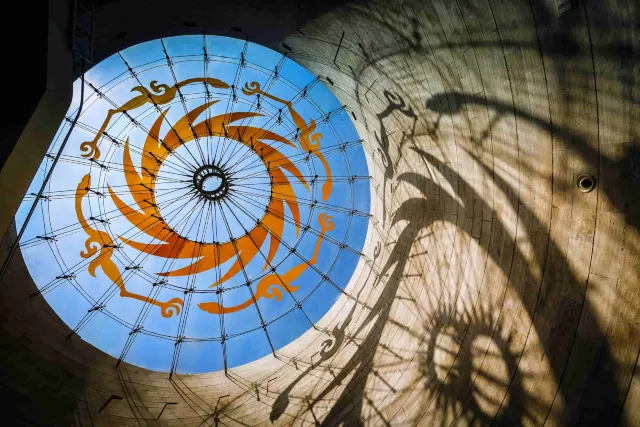
Must-see highlights: Sun and Immortal Birds Gold Ornament, the gold mask, Gold Belt with Fish Pattern, Trumpet-shape Gold Object; The Ten_sqldoulbeline_Node Cong; Bronze Dagger-Axe; Bronze Bi with a Handle.
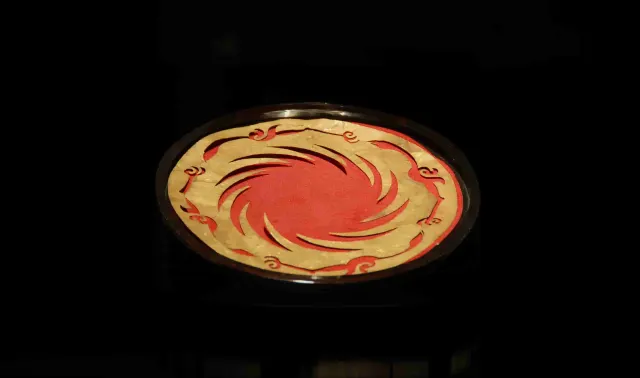

Museum Reservation: Tickets can be reserved through the official website and WeChat account of the Chengdu Jinsha Site Museum, purchased via Ctrip, or bought at the museum's ticket window.
Opening Hours: 09:00-18:00 (last entry at 17:00), July-August: 08:30-19:00 (last entry at 18:00), closed on Mondays (except for public holidays and January, February, July, and August).
Location: Chengdu Jinsha Site Museum, No. 2 Jinsha Site Road, Qingyang District, Chengdu
The Hong Kong Palace Museum, located in the West Kowloon Cultural District by Victoria Harbour, is surrounded by the sea on three sides and adjacent to the trendy M+ Museum. The main building of the Hong Kong Palace Museum is a seven-story structure resembling an ancient Chinese vessel, the fangding. The museum's layout incorporates the central axis of the Forbidden City in Beijing, with atrium spaces on the ground, second, and fourth floors facing different directions, creating a layered layout. The museum features nine exhibition halls, showcasing over 900 precious artifacts from the Palace Museum and art treasures from around the world.
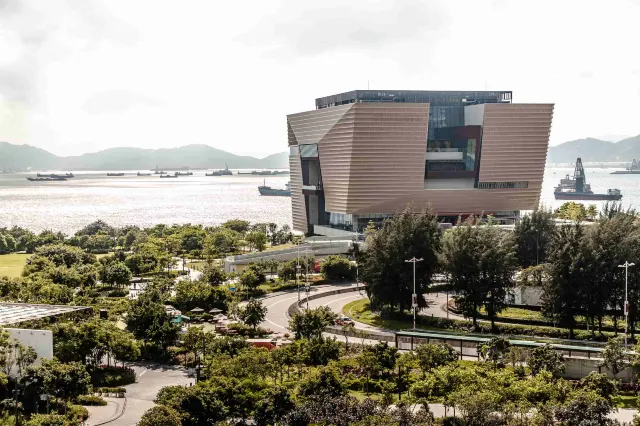
Must-see highlights: Exhibition Hall 1, " Entering the Forbidden City," Architecture, Collection, and Heritage; Exhibition Hall 2, " From Dawn to Dusk," Life and Art in the Forbidden City; Exhibition Hall 3, " Clay to Treasure," Ceramics from the Palace Museum Collection; Exhibition Hall 4, " Encountering the Majestic," Portraits of Qing Emperors and Empresses; Exhibition Hall 5, " The Quest for Originality," Contemporary Design and Traditional Craft in Dialogue; Exhibition Hall 6, " Private to Public," The History of Chinese Art Collecting in Hong Kong; Exhibition Hall 7, " No Boundaries," Reinterpreting Palace Museum Culture.
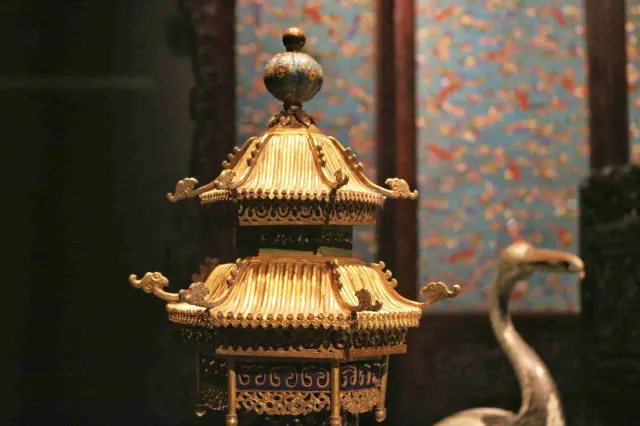
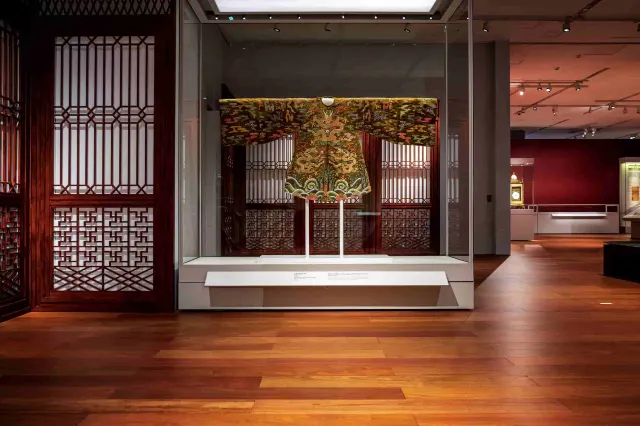
Museum Reservation: Tickets can be purchased through the official website of the Hong Kong Palace Museum or via Ctrip.
Opening Hours: Monday, Wednesday, Thursday, and Sunday: 10:00-18:00; Friday, Saturday, and public holidays: 10:00-20:00; closed on Tuesdays (except public holidays), Lunar New Year's Day, and the second day of the Lunar New Year.
Location: West Kowloon Cultural District, 8 Museum Drive, Kowloon
The Hubei Provincial Museum, known as the Hall of Jingchu Culture, consists of three ancient-style buildings: the Comprehensive Exhibition Hall, the Chu Culture Hall, and the Bell Hall. The layout reflects the high-platform architectural style of the ancient Chu State. The museum's regular exhibitions feature distinct characteristics of ancient Chu culture and ancient Yangtze River civilization. In addition to viewing the artifacts, visitors can also enjoy bell performances in the museum's concert hall.
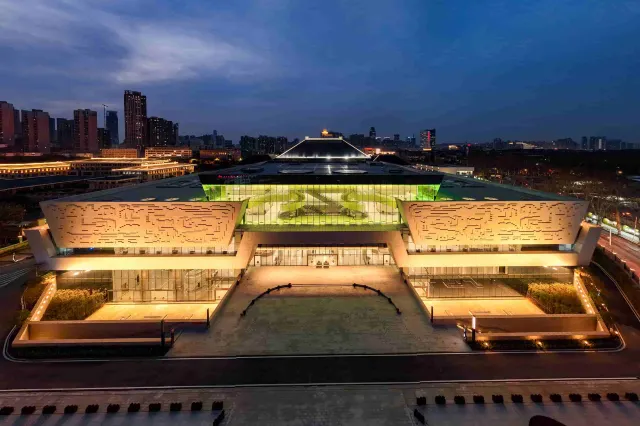
Must-see highlights: The museum's four major treasures include the Chime-bells from the Tomb of Marquis Yi of the Zeng State, the sword of Goujian, Human skull fossils from Yunxian County, and the Blue and White plum vase of the four loves in Yuan Dynasty

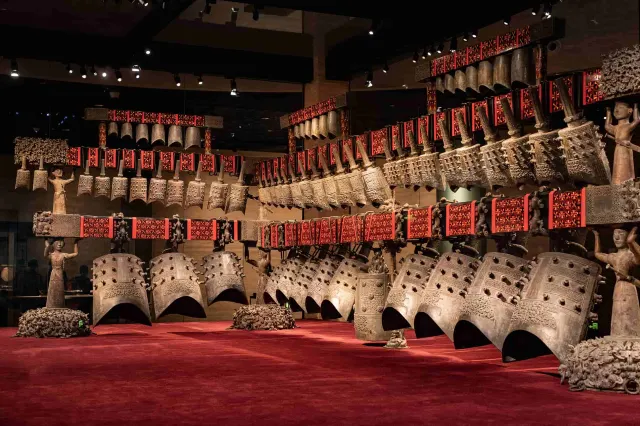
Museum Reservation: Tickets can be reserved through the official website and WeChat account of the Hubei Provincial Museum, up to 7 days in advance.
Opening Hours: Tuesday to Sunday: 09:00-17:00 (closed on Mondays and Chinese New Year's Eve, except for public holidays). During the summer (until August 31), the museum extends its hours to 08:30-17:30.
Location: No. 156, Donghu Road, Wuchang, Wuchang District, Wuhan
The Gansu Provincial Museum, located in Lanzhou, is one of the most significant Chinese museums showcasing numerous precious cultural relics. This museum offers a fascinating journey through the rich history of Gansu, from the Neolithic period to the modern era, making it a standout in the world of Chinese museums. Due to its location on the Silk Road, it also highlights artifacts reflecting the cultural exchanges between the Western Regions, Central Plains, and Tibetan areas, a trait unique to Chinese museums in this region.

Must-see highlights: The Eastern Han Dynasty bronze galloping horse, the Western Han Dynasty painted wooden chariot, the Western Han Dynasty painted wooden figurine playing a board game, the Western Han Dynasty painted wooden seated Buddha and attendant bodhisattvas, the Western Han Dynasty ritual bamboo slips, the Yuan Dynasty glass lotus cup, and the Neolithic painted pottery bottle with a salamander pattern.

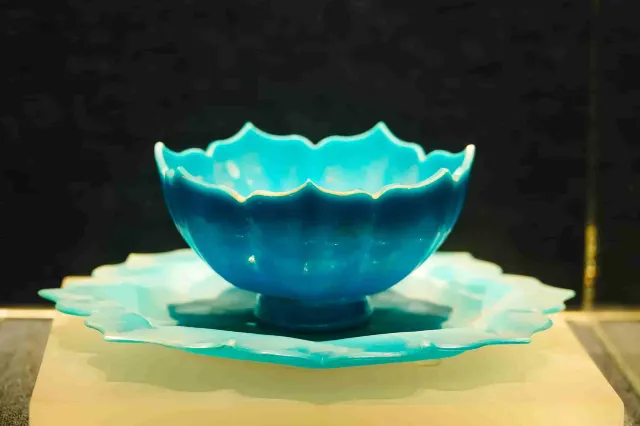
Museum Reservation: Free tickets can be reserved up to 3 days in advance through the official WeChat account of the Gansu Provincial Museum.
Opening Hours: August: Tuesday to Sunday: 08:30-18:30 (last entry at 18:00); other seasons: 09:00-17:00, closed on Mondays (except for public holidays).
Location: No. 3 Xijin East Road, Qilihe District, Lanzhou City
The Nanjing Museum is one of the oldest and most richly endowed Chinese museums. Its impressive architecture and "one courtyard, six halls" layout make it a significant cultural hub, housing thousands of ancient artifacts. As one of the top Chinese museums, it offers a deep dive into ancient Chinese culture, calligraphy, and art, including the gold-threaded jade suit, a masterpiece found in only a few select Chinese museums.

Must-see highlights: The brick painting of the Seven Sages of the Bamboo Grove, the gold beast, the celadon beast-shaped zun, the bronze ox lamp with inlaid silver, the Kunyu Wanguo Quantu (Map of the World), the red-glazed porcelain vase with three friends motif, the silver belt hook with the inscription "Long Live the Emperor," the gold-threaded jade suit, the gold-inlaid bronze box with animal motifs, and the jade cicada and leaf.
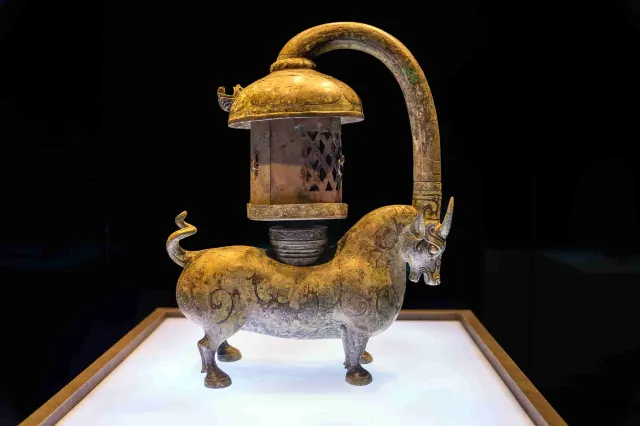
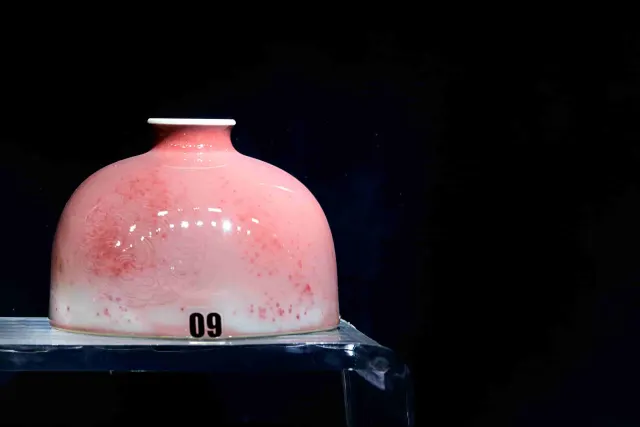
Museum Reservation: Tickets can be reserved through the official website and WeChat account of the Nanjing Museum, with tickets released 7 days in advance at 18:00.
Opening Hours: Tuesday to Sunday: 09:00-17:00, July 9-August: 09:00-18:00, closed on Mondays.
Location: No. 321, Zhongshan East Road, Xuanwu District, Nanjing
The National Palace Museum in Taipei is internationally recognized as one of the top three Chinese museums, alongside the Palace Museum in Beijing and the Nanjing Museum. This museum boasts a rich collection of historical treasures, from Shang and Zhou bronzes to famous paintings and jade artifacts, all offering insight into China’s vast cultural legacy. It stands as a pillar among Chinese museums that preserve and promote Chinese heritage.
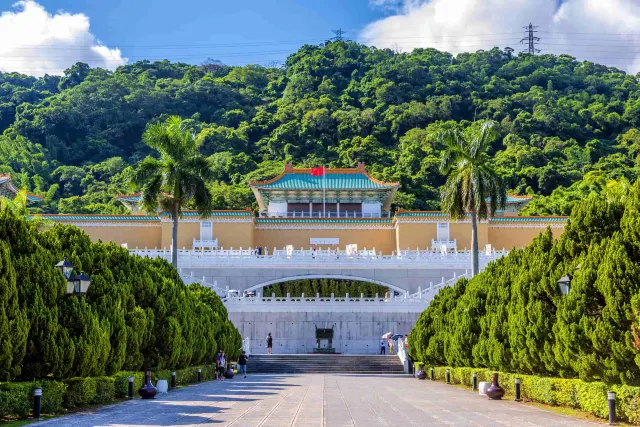
Must-see exhibits: Notable bronzes include the Mao Gong Ding, San Shi Pan, and Zong Zhou Zhong. The three great paintings are Guo Xi's "Early Spring," Fan Kuan's "Travelers Among Mountains and Streams," and Su Shi's "Cold Food Observance." Famous books include the Wen Yuan Ge edition of the "Complete Library of the Four Treasuries" and the Chi Zao Tang edition of the "Essentials of the Four Treasuries." Star artifacts include the Jadeite Cabbage and the Meat-shaped Stone. The museum also houses around ten thousand jade pieces, as well as lacquerware, glass, gold and silver items, and scholarly tools.


Museum reservations: Tickets can be reserved and purchased on the National Palace Museum's official website.
Opening hours: Tuesday to Sunday, 09:00-17:00 (ticket sales stop at 16:30). In August, the museum extends its hours to 09:00-18:00 (ticket sales stop at 17:30). Closed on Mondays.
Location: No. 221, Sec 2, Zhi Shan Rd, Shilin District, Taipei City, Taiwan 111
Shanghai Museum is one of the most renowned Chinese museums for its vast collection of bronzes, ceramics, and calligraphy. The " On Top of the Pyramid: The Civilization of Ancient Egypt," the largest and highest-level exhibition of Egyptian artifacts ever held in Asia, will feature 788 pieces from different periods of ancient Egyptian civilization, with over 95% of the artifacts making their first appearance in Asia. This exhibition will be held at the Shanghai Museum's People's Square venue from July 19, 2024, to August 17, 2025.

Must-see exhibits: The Chinese Ancient Bronze Gallery houses the museum's treasure, the Da Ke Ding from the Western Zhou dynasty, along with other precious items like the Spring and Autumn period Xi Zun and the Zi Zhong Jiang Pan. The Ancient Ceramics Gallery features masterpieces such as the Shang dynasty primitive celadon Zun, the Tang dynasty Yue kiln begonia-shaped bowl, a set of Song dynasty Ru kiln plates, and the Yuan dynasty Jingdezhen kiln blue and white lotus jar. The Ancient Calligraphy Gallery includes works like Wang Xizhi's "Shangyu Tie," Wang Xianzhi's "Duck Head Pill Tie," and Emperor Huizong of Song's "Thousand Character Classic" in slender gold script. The Ancient Painting Gallery showcases rare treasures like Sun Wei's "Noble Scholars," Dong Yuan's "Summer Mountains," and Liang Kai's "Eight Eminent Monks."
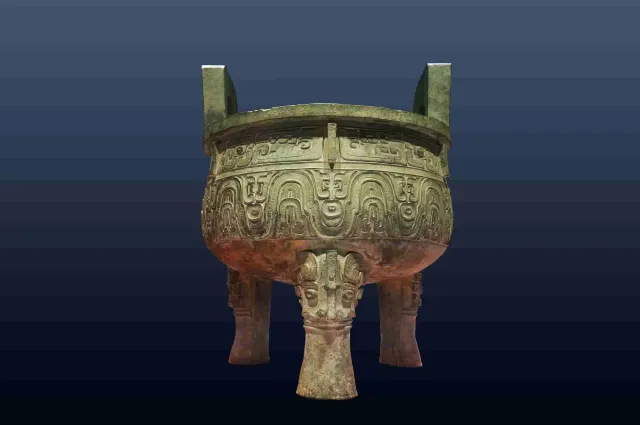

Museum reservations: Reservations can be made up to 14 days in advance through the "Shanghai Museum" WeChat public account or mini-program. The reservation system is divided into the People's Square venue and the East Pavilion, so be sure to distinguish between them and visit within the reserved time slot. Tickets for the Egyptian exhibition are priced at 148 yuan and can be purchased on Ctrip. Due to high demand, reservations are recommended.
Opening hours: The People's Square venue is open daily from 9:00-17:00 (last entry at 16:00), and closed on Mondays (except national holidays). From July 19 to August, the museum extends its hours to 21:00 (last entry at 19:00). The East Pavilion is open daily from 10:00-18:00 (last entry at 17:00), closed on Tuesdays (except national holidays).
Location: 201 Renmin Avenue, Huangpu District, Shanghai
Trending Travelogues
Popular Attractions
Popular Ranked Lists
Popular Destinations
Recommended Attractions at Popular Destinations









Site Operator: Trip.com Travel Singapore Pte. Ltd.


